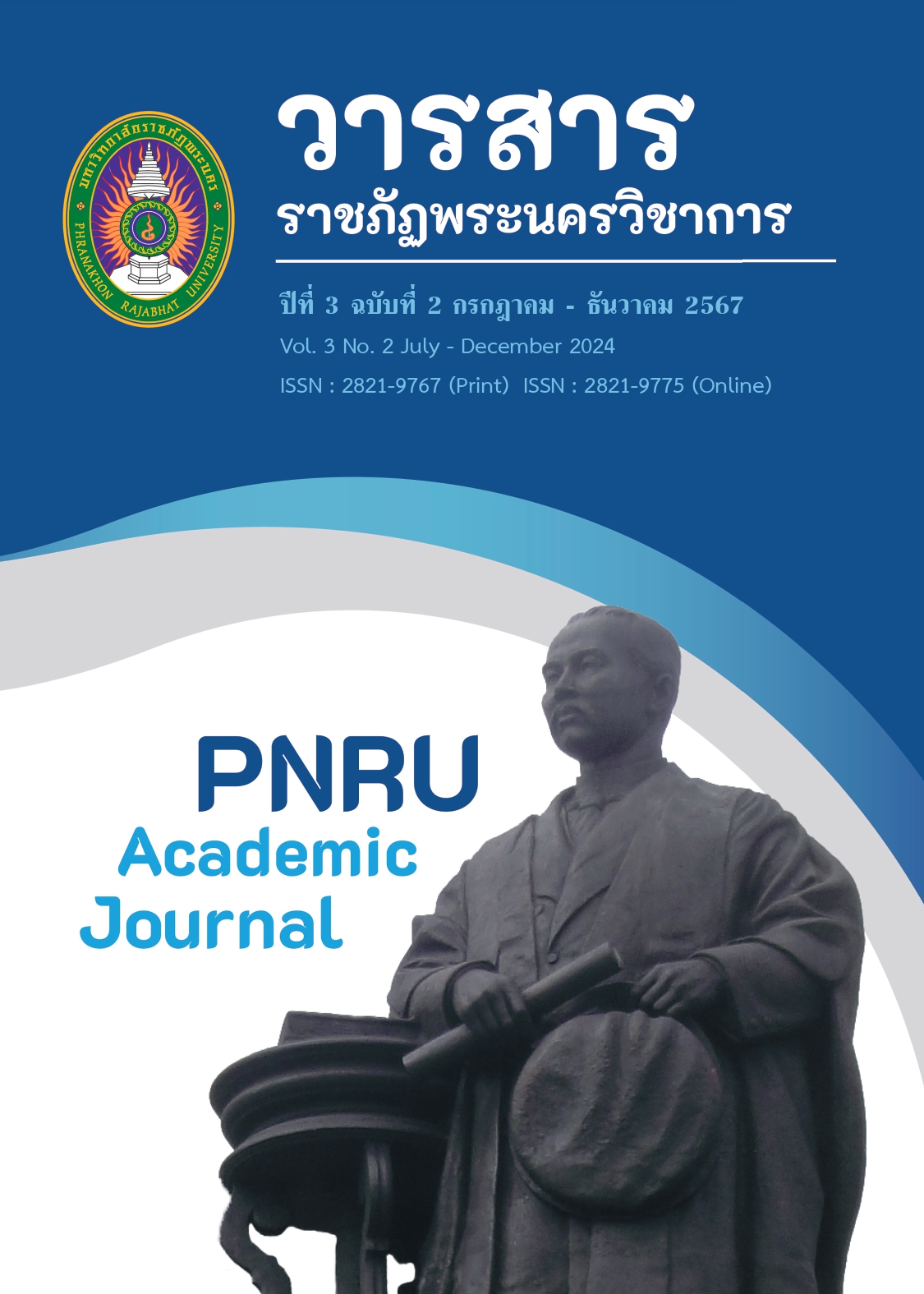TEACHING CHINESE USING ONLINE PLATFORMS FOR A NEW DIMENSION OF LEARNING
Keywords:
Chinese, Teaching Chinese, Online platformsAbstract
In the digital age where technology plays a significant role in daily life, Chinese language teaching has been developed to be easily accessible through online platforms. This enhances learner engagement and addresses issues related to curriculum, instructors, teaching materials, and management found in traditional education systems. This article examines the use of online platforms as tools for teaching Chinese, focusing on the development of modern teaching materials such as videos, infographics, learning games, and online exercises. It also explores the application of interactive technologies like virtual classrooms and AI chatbots. Additionally, it discusses the use of motivational mechanisms such as gamification, reward systems, and interactive activities, which enhance learning efficiency and stimulate student interest. The study found that the selection of appropriate online platforms significantly impacts the development of students' four language skills: listening, speaking, reading, and writing. Listening, speaking, reading, and writing, all of which play a crucial role in communication and learning, make Chinese language highly significant to Thailand's economy, society, education, and culture. It emphasizes that learning Chinese not only enables effective communication but also prepares for business opportunities, investments, and international cooperation. Online platforms make learning flexible, meet the needs of modern learners, and promote more effective proactive learning.
References
Brown, D., & Carter, L. (2020). Monetizing online platforms: Exploring revenue models for educators on TikTok and Facebook. Journal of Digital Education, 14(2), 33-47.
Chen, Y. (2020). Teaching Chinese as a foreign language using online platforms: Opportunities and challenges. Journal of Language Learning Technologies, 14(2), 103-117. https://doi.org/10.1016/2020.01.008
Hall, K., & Young, T. (2021). Time management in content production: Best practices for creators. Content Creator Magazine, 27(1), 88-95.
Jenkins, D. (2020). Understanding your audience for better content creation. Journal of Digital Communication, 13(4), 45-60.
Linkedin.com. (n.d). What is LinkedIn and how can I use LinkedIn?. Retrieved from https://www.linkedin.com/help/linkedin/answer/a548441?lang=th-TH [2023, 5 Jan.]
Liu, J., Zhang, X., & Wang, Y. (2021). The role of online platforms in teaching Chinese: Enhancing engagement through multimedia and cultural storytelling. Journal of Chinese Language Teaching, 17(3), 45-58.
Office of the Basic Education Commission. (2022). Workshop on Developing Guidelines for Chinese Language Teaching and Guidelines for Requesting the Opening of Special Chinese Language Classes. Retrieved from https://www.obec.go.th/archives/743797 [2023, 5 Jan.]
Office of the Education Council. (2016). Research report for the development of Chinese language teaching in Thailand at the secondary school level. Bangkok: Prikwan Graphic Co., Ltd.
Office of the Higher Education Commission. (2021). Chinese Language Education in Thailand: Opportunities and Challenges. Research report, 12(4), 10-21.
Roberts, P., & Allen, C. (2020). Optimizing content for SEO: Strategies and trends. SEO Journal, 5(1), 71-85.
Smith, A., & Taylor, B. (2022). The impact of social media platforms on learning engagement: A case study of Facebook and TikTok. International Journal of Educational Technology, 29(1), 12-25.
Taylor, E. (2021). Long-term value in content creation: Strategies for sustainable engagement. Content Strategy Journal, 9(4), 103-119.
Thailand Knowledge Park. (2021). Lifelong Learning Focus: Statistical Data and Analysis of Lifelong Learning with Future Directions. Bangkok: Dan Suttha Printing Co., Ltd.
Tourism Authority of Thailand. (2022). Promoting Chinese language learning and tourism between Thailand and China. Bangkok: Tourism Authority of Thailand.
Vachira Thongsuk. (2022). What exactly is a platform? Why is it talked about so often? In this era, everyone must know about it!. Retrieved from https://talkatalka.com/blog/what-is-a-platform [2023, 5 Jan.]
Xu, H., & Wang, Z. (2022). Interactive language learning through WeChat and TikTok: A new wave of Chinese language teaching. Asia Pacific Journal of Language and Communication, 8(1), 49-62. https://doi.org/10.1234/apjlc.2022.1002
Zhang, L., & Li, X. (2019). The role of social media in promoting Chinese language acquisition. Chinese Language Education Journal, 16(4), 235-250.
Downloads
Published
How to Cite
Issue
Section
License
Copyright (c) 2024 PNRU Academic Journal

This work is licensed under a Creative Commons Attribution-NonCommercial-NoDerivatives 4.0 International License.
Each publish articles were copyright by Phranakorn Rajabhat University
Any contents which appeared in each articles in the journal were authors personal opinion. It did not relate to Phranakorn Rajabhat University and other instructors in the university. Each authors would take responsibility on their articles. If there are any mistake, the authors will take responsibility themselves



